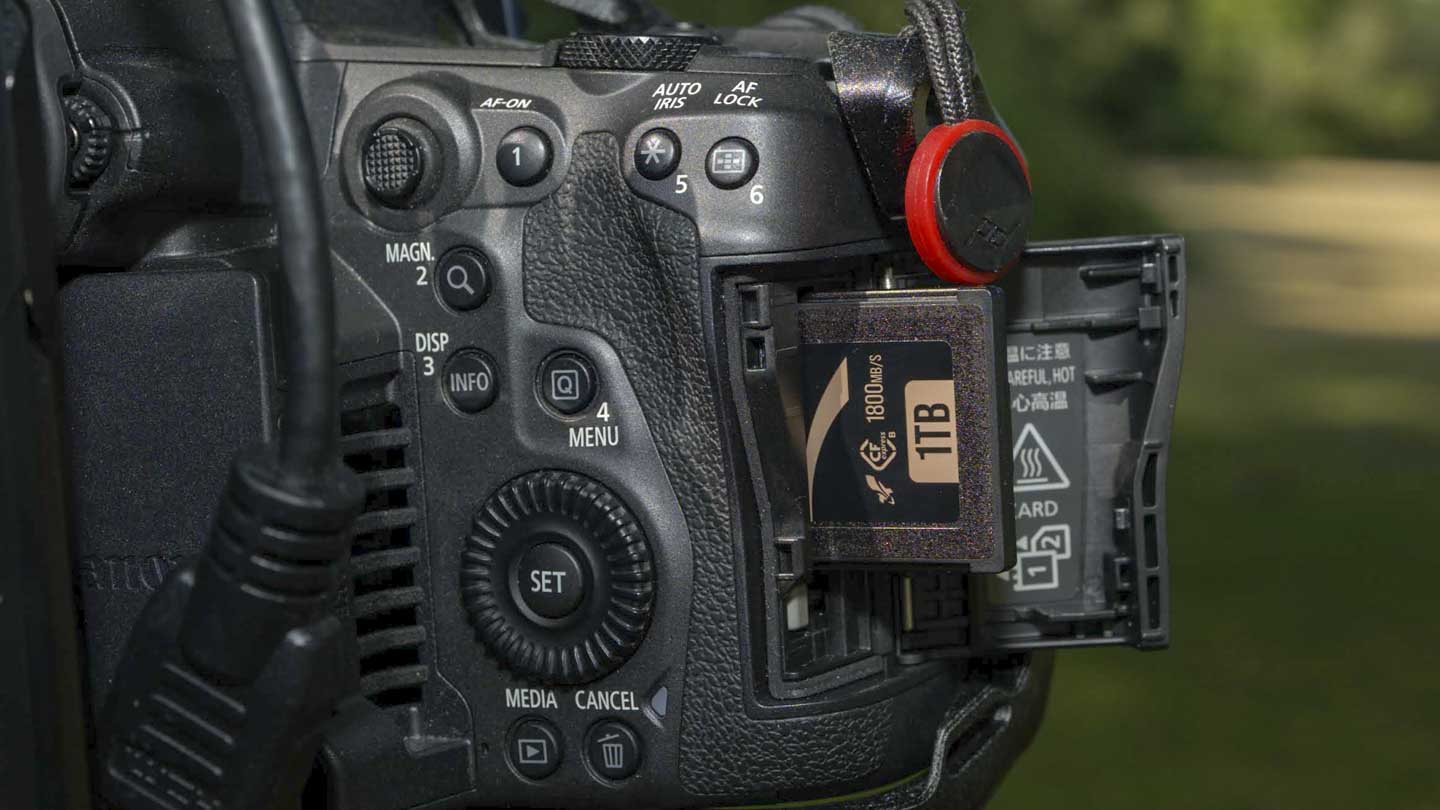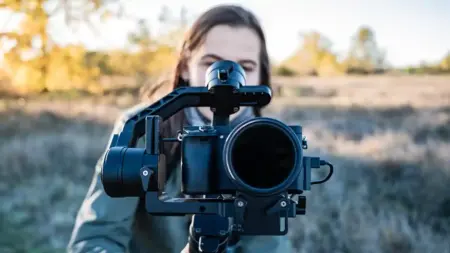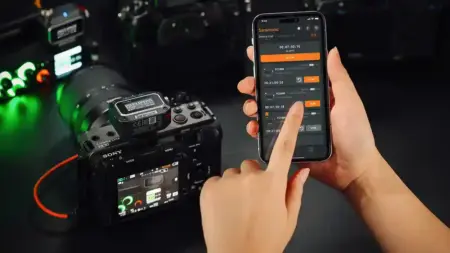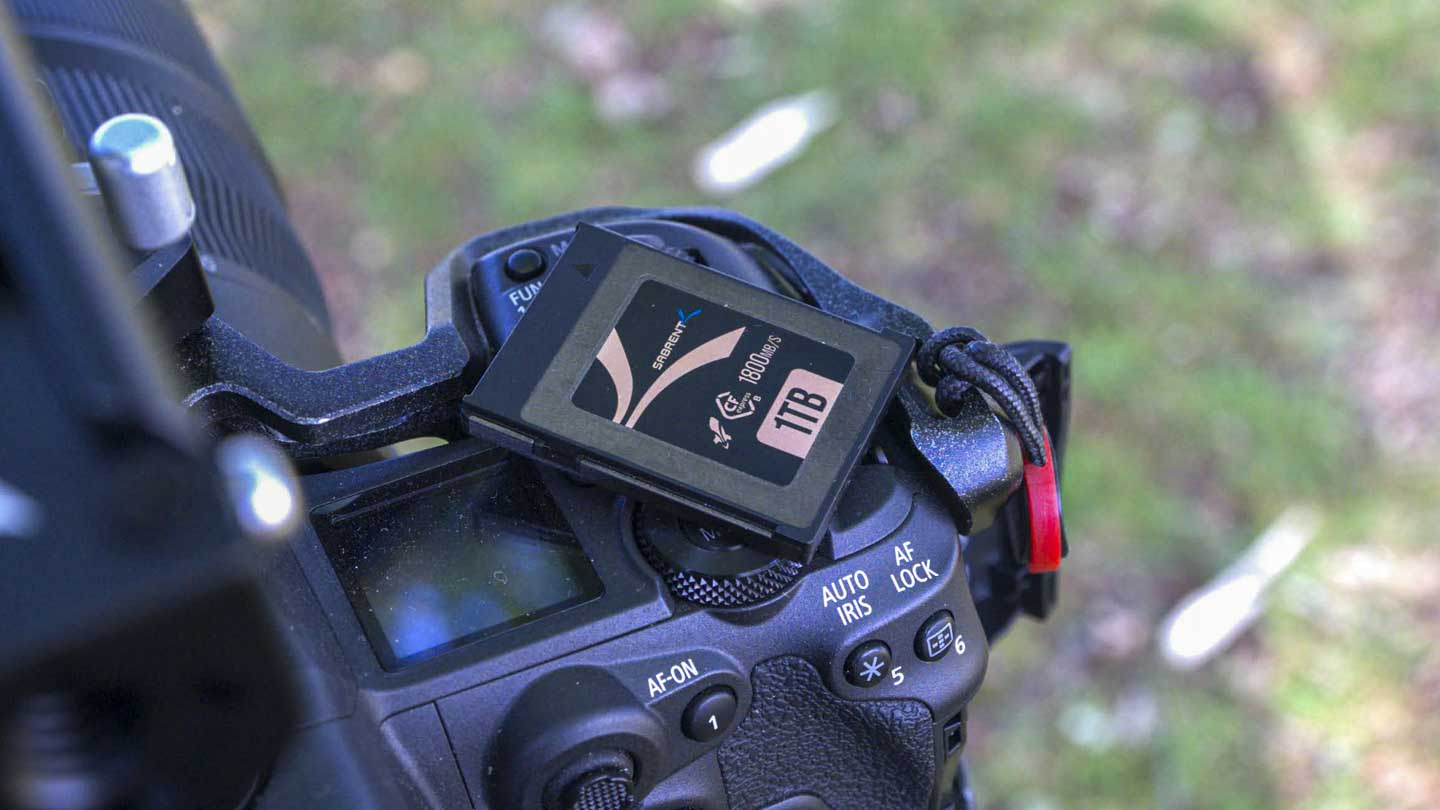The fact is that I’ve now looked at loads of CFExpress cards, and the one thing that stands out is that you can’t tell anything from the way that these cards look. They all seem incredibly well made, robust and ready for the rigours of life with a photographer or videographer. So when it comes to build quality, so far every CFExpress card I’ve looked as has been good, and this one is just as good as the last and more than likely as good as the next!
When it comes to handling, as with any memory card it’s out of the case and into the camera, there ain’t much more to it! So let’s look at the features.
The card sports impressive transfer speeds reaching up to 1,800 MB/s read and 1,700 MB/s write. These high-speed capabilities will be especially interesting for professionals shooting high resolution images and video; so perfect for the likes of the new Nikon Z8 and Canon R5 C, which is essentially the camera I’m using in the test.

Another intriguing feature is the card’s high IOPs, over 300,000, which ensures rapid access to your files, further improving your workflow efficiency. This, coupled with a variety of wear management features such as LDPC, ECC RAID, and end-to-end data protection, provides a level of reliability and durability that should add an extra level of reassurance.
The card’s compatibility extends to certain XQD cameras, albeit those with a CFExpress upgrade path through firmware like the early Nikion Z cameras. I tried it in the Sony FS7 but no luck, this camera is still soley XQD. Alongside compatibility are the hefty capacities of up to 2TB, our review sample is 1TB, which should cator for most people.







